What if you’re deep in the woods, the last rays of sunlight fading on the horizon, and a storm is brewing. You’ve got to create a shelter, fast. Now, wouldn’t you want to be armed with something more than a cheap, flimsy knife?
In Japan, they’ve been crafting these life savers for generations, each one better than the last. They make knives with razor-sharp blades that can cut through wood like butter, and their robust handles feel just right in your grip.
Isn’t this the companion you’d want when nature decides to test you?
So what’s the best Japanese bushcraft knife? Over the years, it’s become subjective, but the Higo no Kami folding knife is a great choice for its simple yet effective design and legendary sharpness. Invest in one, and you’ll have a reliable companion for your outdoor adventures.
Now, are you curious to learn more about how this tool could elevate your bushcraft experience? Read on as we delve deeper into the remarkable world of Japanese bushcraft knives.
Blade Material: Warikomi Alloy Steel
Blade Length: 3 Inches
Weight: 1.76 ounces
- Superior warikomi steel blade
- Compact and lightweight
- Intricate Japanese design
- Great value for money
- Can rust without proper care
- Lacks a blade-locking mechanism.
In this Article
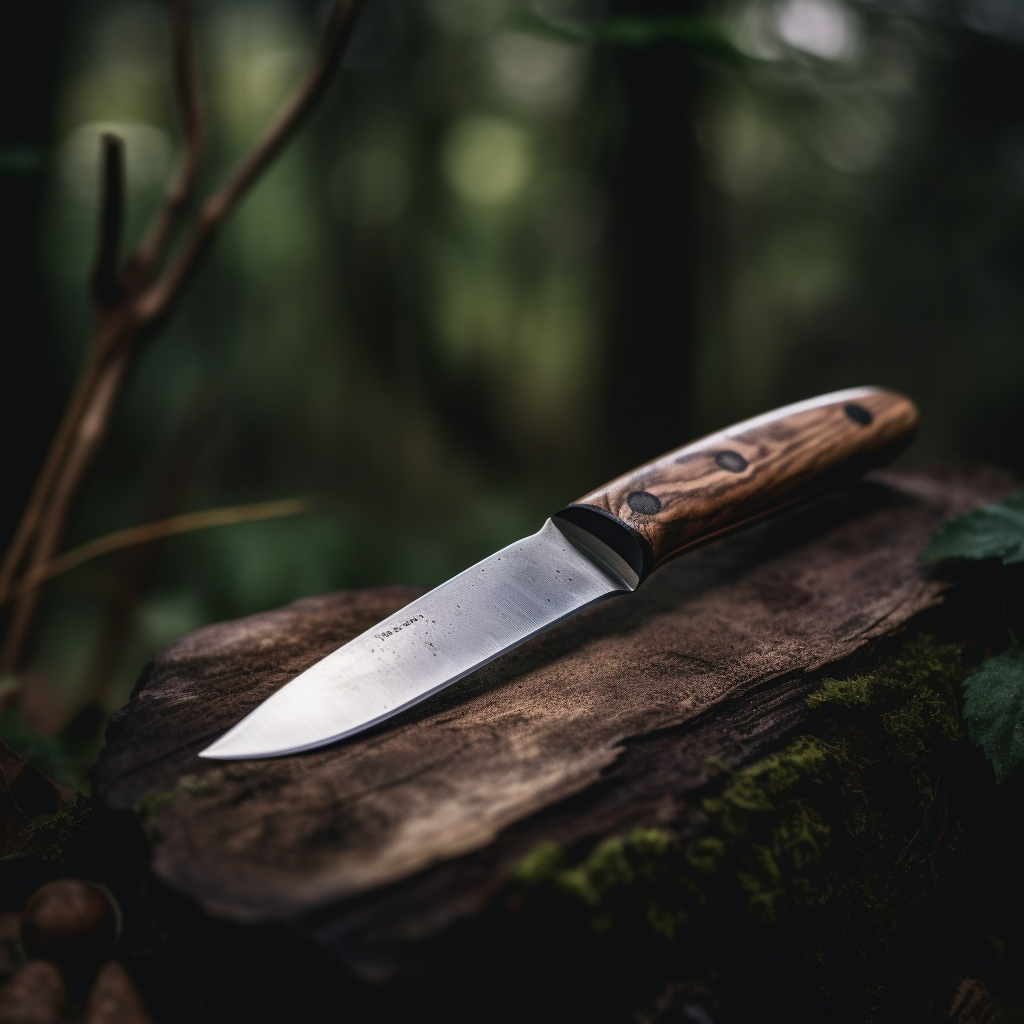
History and Significance of Japanese Knives
Japanese knives have a rich history dating back to samurai swords. The same skills and devotion that went into crafting the legendary samurai swords, known for their exceptional sharpness and durability, were later applied to creating kitchen and utility knives.
This shift came during the peaceful Meiji Restoration in the 19th century when the samurai class was disbanded.
These knives aren’t merely tools, but cultural symbols that embody Japanese values of precision, artistry, and respect for natural materials. The technique used in their creation is often passed down through generations, preserving the traditional methods that set these knives apart.
Today, they’re highly sought-after globally by chefs and culinary enthusiasts alike, prized for their balance, keen edge retention, and aesthetic appeal.
What distinguishes Japanese knives from ordinary ones is the exceptional attention to detail in their creation. Every knife from Japan is a testament to meticulous craftsmanship.
The blades are usually thinner and sharper, designed for precision cutting rather than brute force. Different types of Japanese knives are purpose-built for specific tasks, reflecting a philosophical approach to cooking where each ingredient deserves respect and careful handling.
In the context of survival, Japanese knives, such as the Higonokami, stand out. Their remarkable sharpness and durability make them ideal for various tasks in the wilderness, from building a shelter to preparing food.
These attributes stem from Japan’s centuries-old sword-making traditions, where a blade was seen as a warrior’s companion and, indeed, a lifesaver.
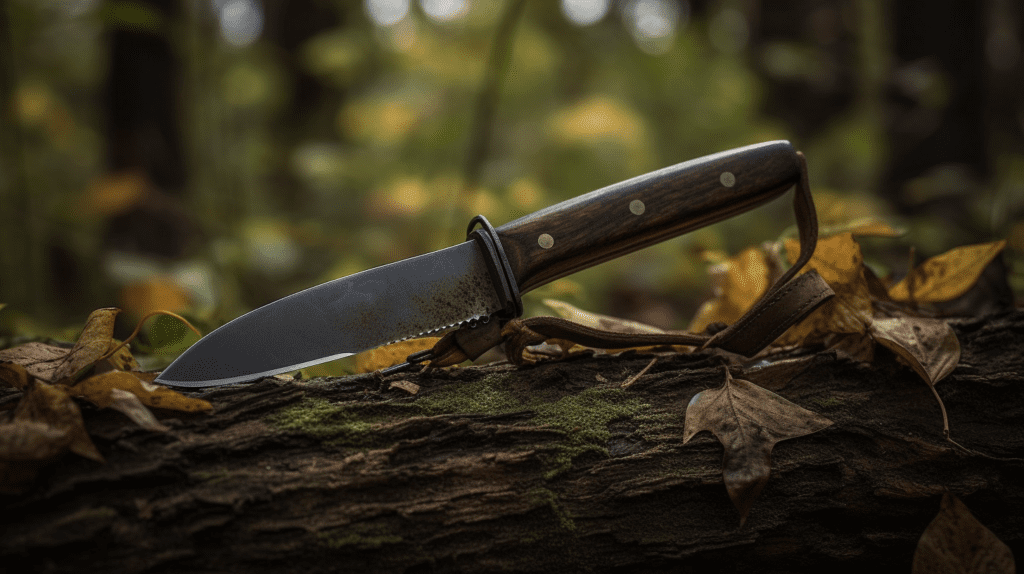
Popular Japanese Bushcraft Knife Materials
Shiro-Ko (White Steel)
White Steel is a superior form of carbon steel, highly refined with very few impurities within the iron. This attribute allows knives made from high-carbon white steel to achieve an exceptionally sharp, razor-like edge.
It’s the favored choice for many sashimi chefs, who appreciate its ability to deliver precise, fine cuts of fish, vegetables, and garnishes.
Despite being quite challenging to forge and sensitive to changes, white steel is revered for its versatility. There are two types of white steel and the difference is in the amount of carbon they contain.
White steel #1 possesses a higher carbon content, guaranteeing the best edge retention. However, it’s also the most fragile, making #2, which offers a balance of durability and sharpness, the preferred choice.
Aogami Steel (Blue Steel or AO-KO)
Aogami Steel, or Blue Steel, is known for its durability and sharpness. This steel consists of high carbon content and includes a combination of other alloys such as chromium and tungsten to increase its hardness and resistance to wear.
However, it’s important to note that while Aogami Steel boasts outstanding sharpness and durability, it isn’t stainless. This means it’s prone to rust and requires careful maintenance to prevent oxidation.
With proper maintenance, your Aogami knife will stay sharp for a long time.
This high-quality carbon steel is named and graded based on its composition: Blue Steel #1, Blue Steel #2, and Blue Super, with Blue Super being considered the superior version due to a higher content of carbon and added elements like tungsten and vanadium.

Types of Japanese Bushcraft Knives
Higonokami
This is a traditional Japanese folding knife, designed with simplicity and functionality in mind. Its name translates to “Lord’s Knife”, and it is known for its ruggedness and exceptional sharpness.
It features a single-edged blade that can handle carving, cutting, and slicing tasks with ease.
Kaiken
The Kaiken is a double-edged, utility knife traditionally carried by both men and women in Japan. It’s often used for self-defense and survival tasks.
The minimalist design, typically without a guard and often featuring a plain wooden handle, makes it practical and effective for various bushcraft tasks.
Tanto
Originally a short sword used by the Samurai, the Tanto has been adapted into a smaller, bushcraft-friendly version.
It has a single edge and a high point with a flat grind, allowing it to handle heavy tasks. Its strength and toughness make it suitable for survival situations.
Santoku
The Santoku is a multi-purpose knife, and while it’s more known for its use in the kitchen, it can also be adapted for bushcraft. It’s versatile and can be used for slicing, dicing, and chopping. Its lightweight nature and balanced design make it easy to handle.
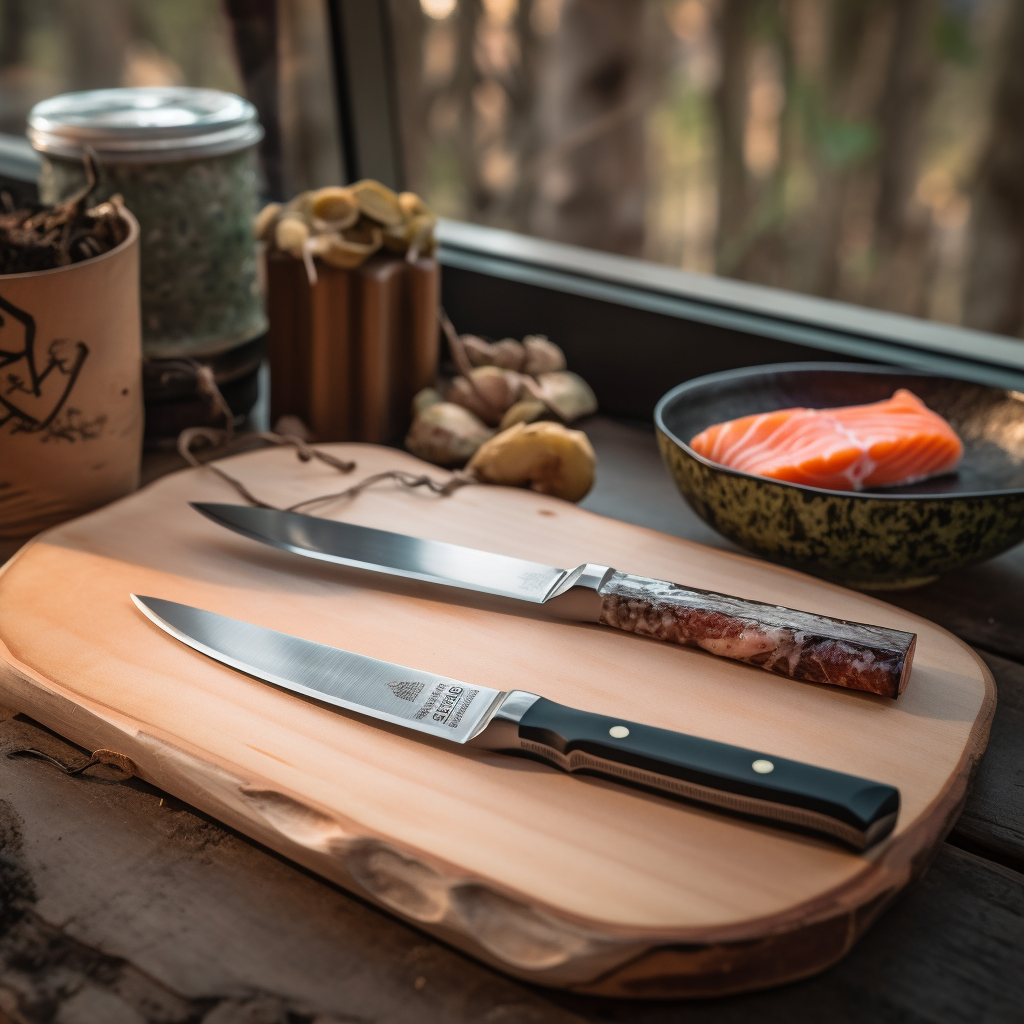
Mora
While the Mora isn’t traditionally Japanese, Japan produces its own version of this Scandinavian knife.
Japanese Mora knives are known for their sturdy construction, comfortable grip, and superior blade sharpness.
Gyuto
The Gyuto, akin to the western chef’s knife, is known for its versatility.
Although primarily a kitchen knife, a Gyuto can handle various bushcraft tasks like carving and preparing food in the wilderness due to its sharpness, edge retention, and balance.
Features of a Quality Japanese Bushcraft Knife
When considering a Japanese bushcraft knife, there are several key features to look out for, such as the following:
Type of Steel
The type and quality of steel used in the blade are crucial. Look for high-carbon steel like Aogami (Blue Steel) or Shirogami (White Steel) known for their excellent edge sharpness and retention.
Remember, higher quality steel might require more maintenance but offers better performance.
Handle Material and Ergonomics
A good knife should have a comfortable handle that provides a secure grip, even in wet conditions.
Traditional Japanese knives often feature handles made of natural materials like wood, which offer a good balance of comfort and control.
Blade Length
The ideal blade length for a Japanese knife largely depends on the tasks you plan to perform with it.
However, generally, a good bushcraft knife will have a blade length between 3 to 6 inches. This size provides versatility for cutting, carving, and chopping tasks while maintaining control and precision.
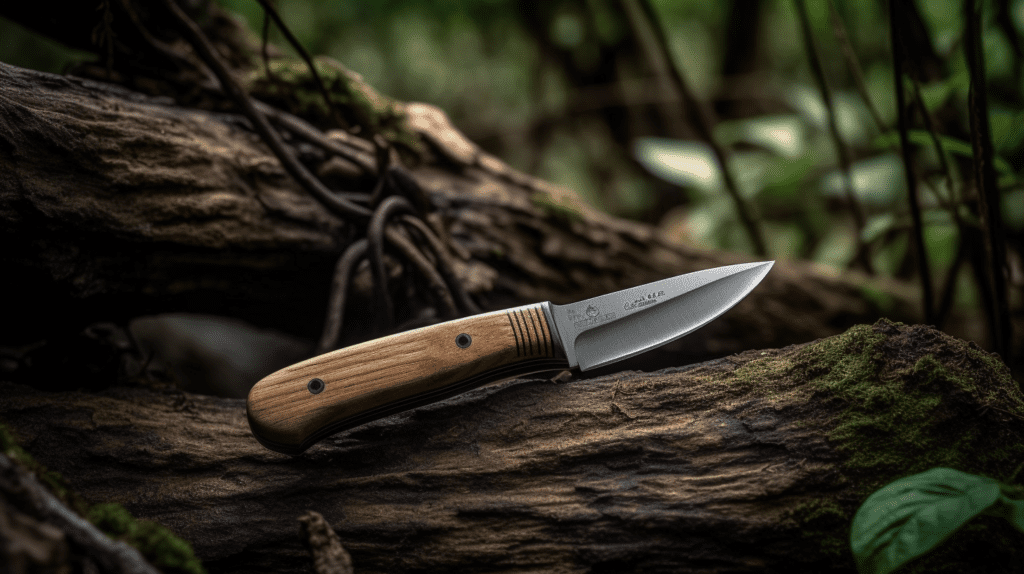
Overall Length
The overall length of your knife should be between 8 to 12 inches. This range ensures a comfortable grip and convenient carry, contributing to a well-balanced knife.
Full-Tang Construction
Opt for full-tang construction, where the blade extends through the entire handle. This design offers strength and durability, vital for outdoor activities or survival situations.
Some benefits include:
- Sturdiness: You don’t have to worry about the knife breaking, even when applying force.
- Balance: Full-tang knives distribute weight evenly, enhancing control and handling.
- Longevity: A solid one-piece construction prolongs your knife’s lifespan.
Remember to prioritize blade length, overall length, and full-tang construction when choosing a quality Japanese bushcraft knife. These features make for reliable, durable, and efficient tools tailored to outdoor and survival situations.
Accessories and Maintenance
Japanese Bushcraft Knife Set
When you’re exploring bushcraft knives, you might consider purchasing a knife set. This allows for versatility and ensures you have the right tool for every task.
Some highly regarded sets are available on Amazon, providing top-quality craftsmanship.
Leather Sheath
Protecting your knife is crucial. A leather sheath not only safeguards the blade but also adds an elegant touch. Look for well-crafted sheaths on Amazon that fit your knife snugly.
To maintain your knife and accessories, follow these simple tips:
- Regularly clean your knife: Wipe the blade clean after each use to prevent rust and dirt.
- Sharpen periodically: Keep the blade sharp for optimal performance, using a sharpening stone or honing rod.
- Care for your sheath: Treat the leather with a leather conditioner, ensuring its longevity and protection.
By investing in the right accessories and maintaining the knife, you’ll ensure your Japanese bushcraft knife stays in prime condition for a long time.
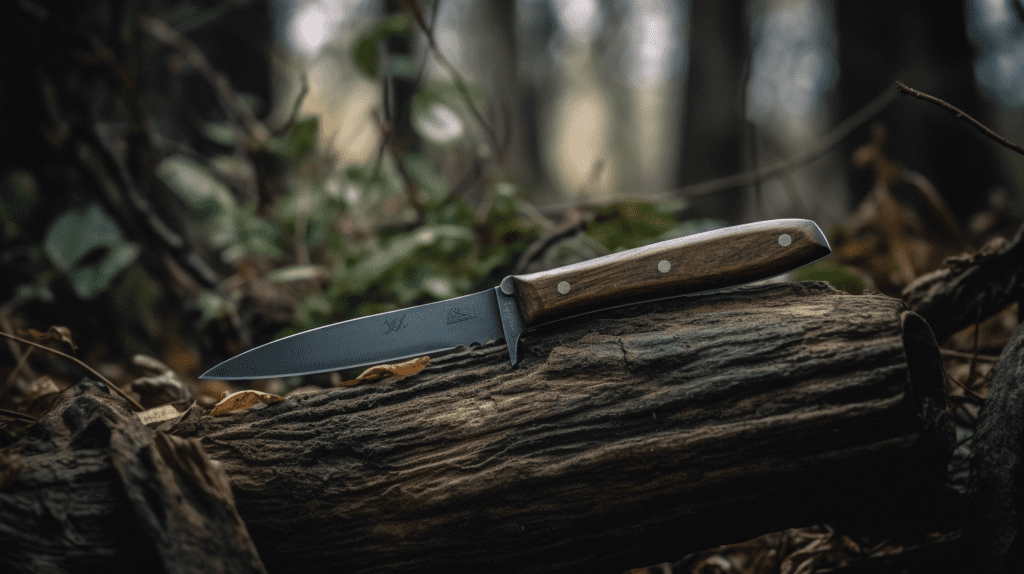
How Do I Maintain My Japanese Bushcraft Knife?
Maintaining your Japanese bushcraft knife is essential for preserving its sharpness, performance, and longevity. Here are some tips for proper knife care:
- Clean After Each Use: After using your knife, clean it carefully with warm water and mild soap to remove any dirt or debris. Avoid dishwashers as they can be too harsh for high-quality blades and can damage the handle.
- Dry Thoroughly: Dry your knife immediately after washing to prevent rust, especially if your knife is made from high carbon steel which is more prone to rusting. Pay special attention to the joint area if it’s a folding knife.
- Oil Regularly: Applying a thin layer of oil to the blade can prevent rusting and corrosion. This is especially important if you’re storing the knife for a long time. You can use specific knife oil or even a light food-safe oil.
- Hone and Sharpen: Regularly honing your knife helps to keep the edge aligned and sharp. Sharpen your knife when honing no longer restores the edge. Japanese knives require a specific sharpening angle, usually around 15-20 degrees. It’s recommended to use a whetstone for sharpening.
- Store Properly: Avoid storing your knife in a damp or humid area. If it’s a folding knife, store it in its open position to avoid unnecessary tension on the spring. Consider a sheath for fixed blade knives, it protects the blade and makes it safer to carry.
- Handle with Care: Although Japanese knives are robust, they’re not intended for tasks like prying or hammering. Use your knife responsibly to avoid damaging it.
Regular maintenance will not only extend the life of your Japanese bushcraft knife but also ensure its optimal performance during your outdoor adventures. Remember, a well-cared-for knife is a reliable tool.
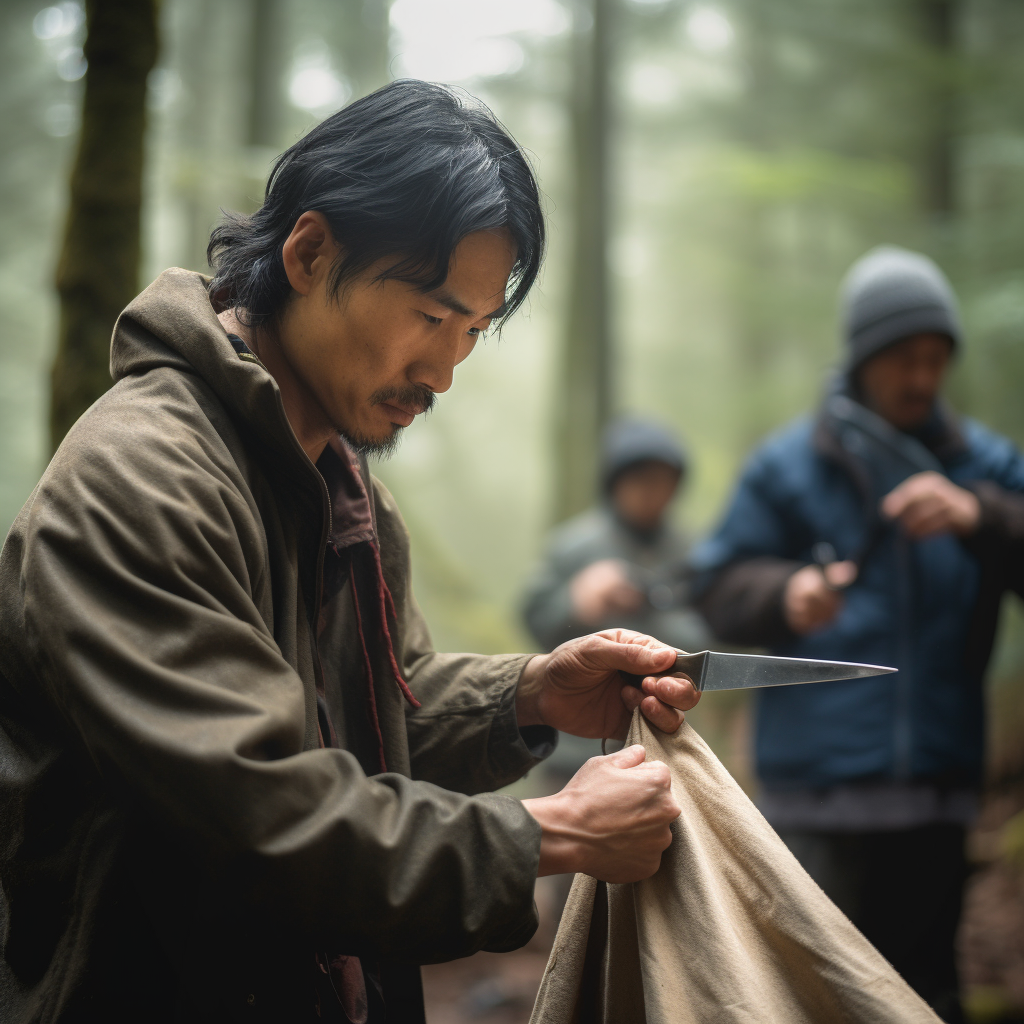
FAQs
Why are Japanese bushcraft knives considered superior for outdoor activities?
Japanese bushcraft knives have a well-deserved reputation for their impeccable craftsmanship and superior performance. Their blades are often crafted from high-quality materials that ensure excellent sharpness, durability, and longevity.
From the forging of the blade to the construction of the handle, each knife is a testament to meticulous care and skill.
This results in a tool that is not only practical but beautifully made and balanced. The design principles are rooted in simplicity and practicality, making them highly versatile and adaptable.
How do I choose the best Japanese bushcraft knife?
When choosing a Japanese bushcraft knife, there are a few factors to consider.
Look for high-quality blade materials like VG-10 or Aogami Blue Steel for durability and ease of maintenance.
The handle design is also essential; seek out ergonomic handles made of hardwood or G10 for comfortable grip and control.
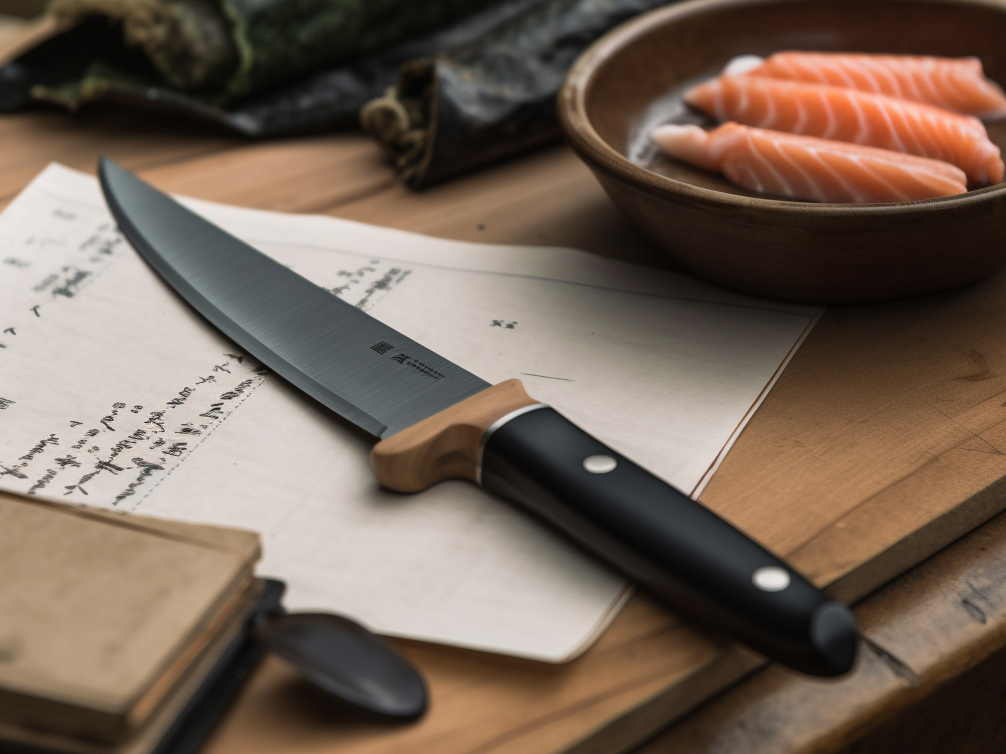
The Japanese Bushcraft Knife: Top Takeaways
A Japanese bushcraft knife is a versatile and efficient tools for your outdoor adventures. They combine traditional craftsmanship with modern materials, giving you the best of both worlds.
- Blade materials: High-quality steel like VG-10 or Aogami Blue steel ensures durability, sharpness, and ease of maintenance for your bushcraft knife.
- Handle design: Ergonomic handles made of materials like hardwood or G10 provides a comfortable grip and enhanced control.
Look for a knife with a tang for added strength. This feature enhances both stability and longevity of your knife.
When seeking the right fit for your needs, consider blade length, thickness, and grind. A versatile choice is a flat or Scandi grind, while a convex grind caters to heavy-duty tasks.
Remember that a good sheath is essential to protect your knife and ensure safe carrying. Leather, Kydex, or nylon are popular materials offering their own unique benefits.
Finally, invest in proper care for your Japanese bushcraft knife. Keep it sharp, clean, and rust-free to enjoy reliable performance for years to come.
ABOUT THE AUTHOR
Bill Montgomery is the co-founder of Modern Day Prepping. He and his wife Angie have been dedicated to the self-reliant lifestyle since 2008. When he’s not working on the homestead, he enjoys tinkering with electronics and family movie nights with Angie and their two boys. To learn more about Bill, visit the About Us page.
If you want to know how to keep your family safe in the modern world, visit Privacy For Patriots, a sister site that Bill started to help fellow Patriots stay "off the radar" from bad actors and big tech.

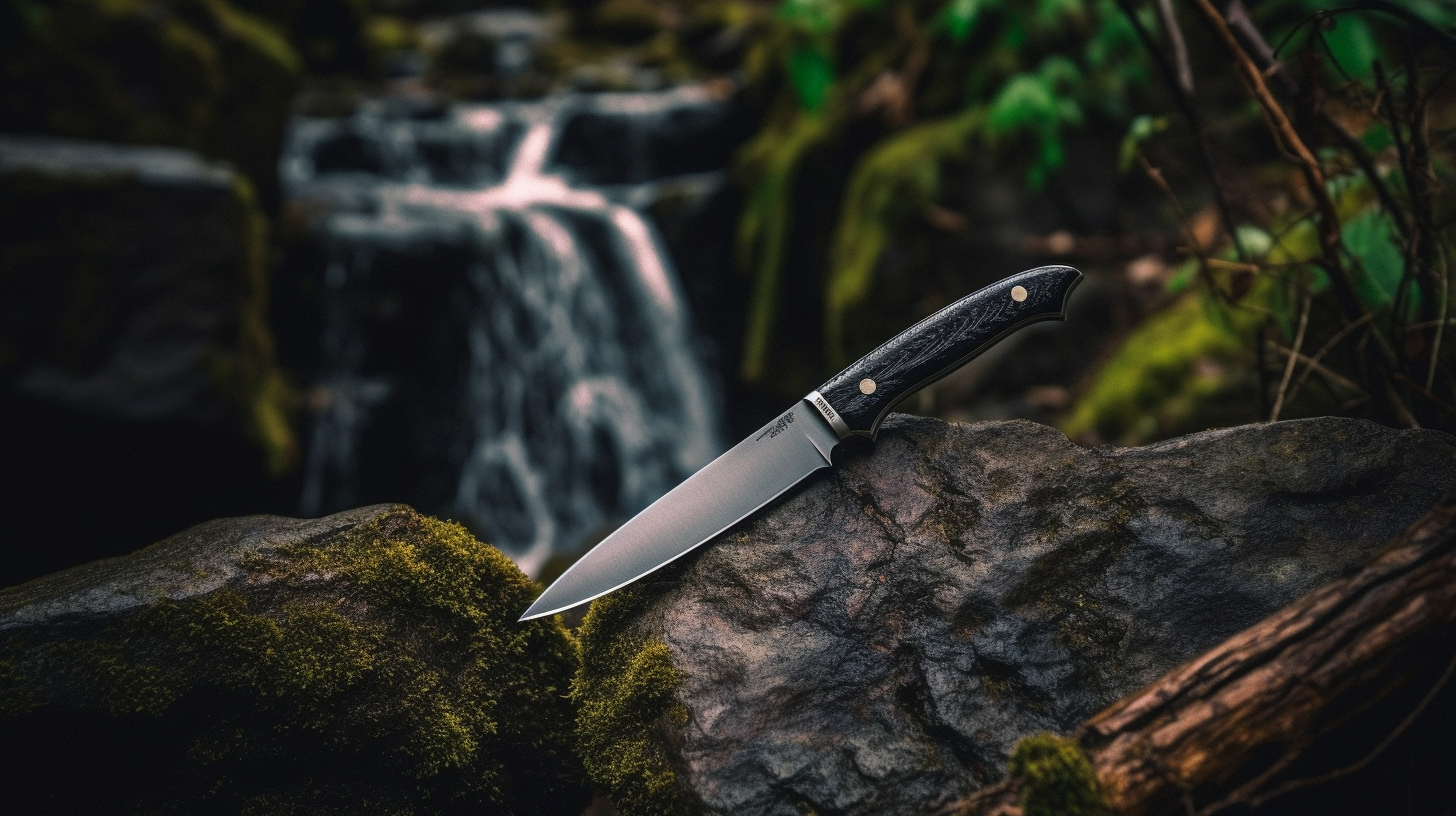

A good bushcraft knife will have a blade length of 4-5 inches. This is long enough to be versatile, but not so long that it is difficult to control.